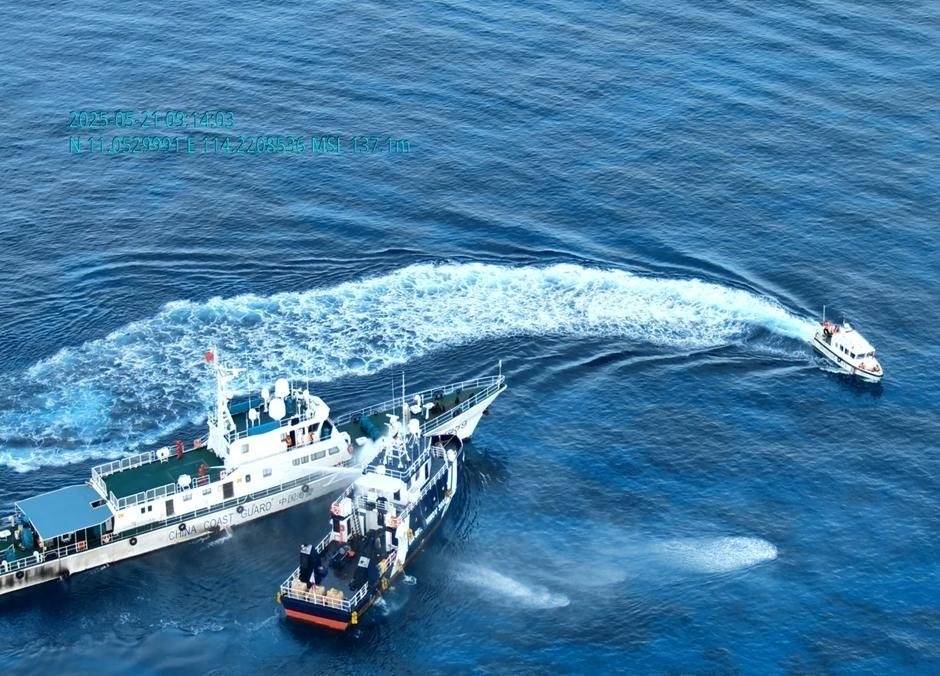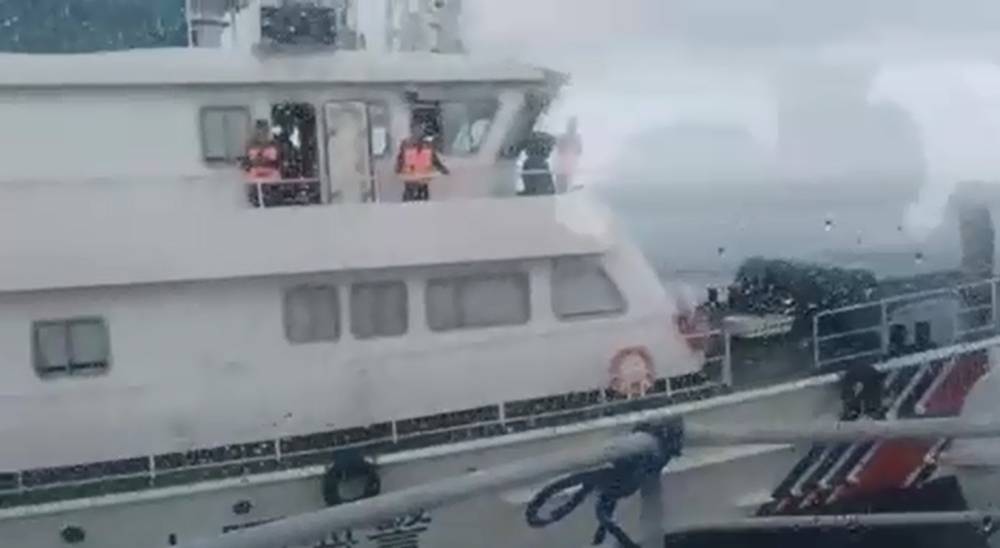China Coast Guard sideswipes, uses water cannon on BFAR boat

A vessel of the Bureau of Fisheries and Aquatic Resources (BFAR) became the latest target of a water cannon attack and a glancing hit from the China Coast Guard (CCG) in the West Philippine Sea (WPS).
According to BFAR, a CCG vessel with bow number 21559 used its water cannon on and also sideswiped the BRP Datu Sanday twice on Wednesday morning near the sandbars off the Philippine-occupied Pag-asa (Thitu) Island.
The Datu Sanday and another BFAR craft, the BRP Datu Pagbuaya, were then on a routine mission with a team of scientists to collect sand samples at Pag-asa Cay 2 (Sandy Cay), the bureau said in a statement on Thursday.
“This incident marks the first time water cannons have been used against DA (Department og Argriculture)-BFAR research vessels in the area of the Pag-asa Cays,” it said.
Lives put at risk
The incident, which happened at 9:13 a.m. on May 21, caused damage on the port bow and smokestack of the Datu Sanday, “putting at risk the lives of its civilian personnel onboard,” BFAR said.
It was the latest harassment carried out by the CCG on Philippine vessels within the country’s territorial waters. Pag-asa Island and Pag-asa Cay 2 form part of the Kalayaan Island Group, which constitutes a municipality under Palawan province.
Despite the “aggressive, dangerous, and illegal” actions of the CCG and Chinese maritime militia vessels, the BFAR said, the Philippine scientific team was able to complete its operations in Pag-asa Cays 1, 2, and 3.
BFAR said it would remain “committed to scientific integrity, sustainable fisheries management, and the protection of national interests in the West Philippine Sea, in accordance with international and domestic law.”

Still in ‘high morale’
In an online briefing, Commodore Jay Tarriela, the Philippine Coast Guard spokesperson on the WPS, said the Datu Sanday and the Datu Pagbuaya were on their way back to an undisclosed port as of Thursday afternoon.
No one onboard was hurt during the incident, Tarriela said, and “our crew remains to have high morale.”
Beijing’s account
“It will never stop our government from conducting marine scientific research, and we have sovereignty over these waters,” he said.
In Beijing, the CCG said it took control measures against two Philippine vessels on Wednesday after they “illegally intruded” into waters near Zamora (Subi) Reef and Sandy Cay in the disputed South China Sea.
One of the Philippine vessels also “dangerously” approached and collided with a Chinese coast guard ship, CCG spokesperson Liu Dejun said in a statement, adding that responsibility “lies entirely” with the Philippine side.
In January, CCG ships and a Chinese helicopter harassed the BRP Datu Pagbuaya and BRP Datu Bankaw that were also conducting scientific research at the sandbars off Pag-asa.
They were met with “aggressive maneuvers” by three CCG vessels—4106, 5103 and 4202.
The CCG also deployed four smaller boats to harass the two BFAR vessels that were transporting personnel to the cays.
In March last year, a Chinese helicopter harassed Filipino vessels doing scientific marine surveys at a sandbar off Pag-asa.
Cay ‘seizure’ belied
Last month, Chinese state media reported that Beijing had seized Sandy Cay, citing the planting of a Chinese flag in the area.
Philippine officials disproved the report by releasing photos and videos of Filipino troops landing on the sandbars unopposed by any Chinese force.
Beijing lays claim to almost the entire South China Sea, including the Philippine exclusive economic zone (EEZ) that Manila also calls the WPS.
China’s aggressive actions have been in total disregard of the historic 2016 arbitral ruling that invalidated its sweeping claims and upheld Philippine sovereign rights in the EEZ. —WITH A REPORT FROM REUTERS





















